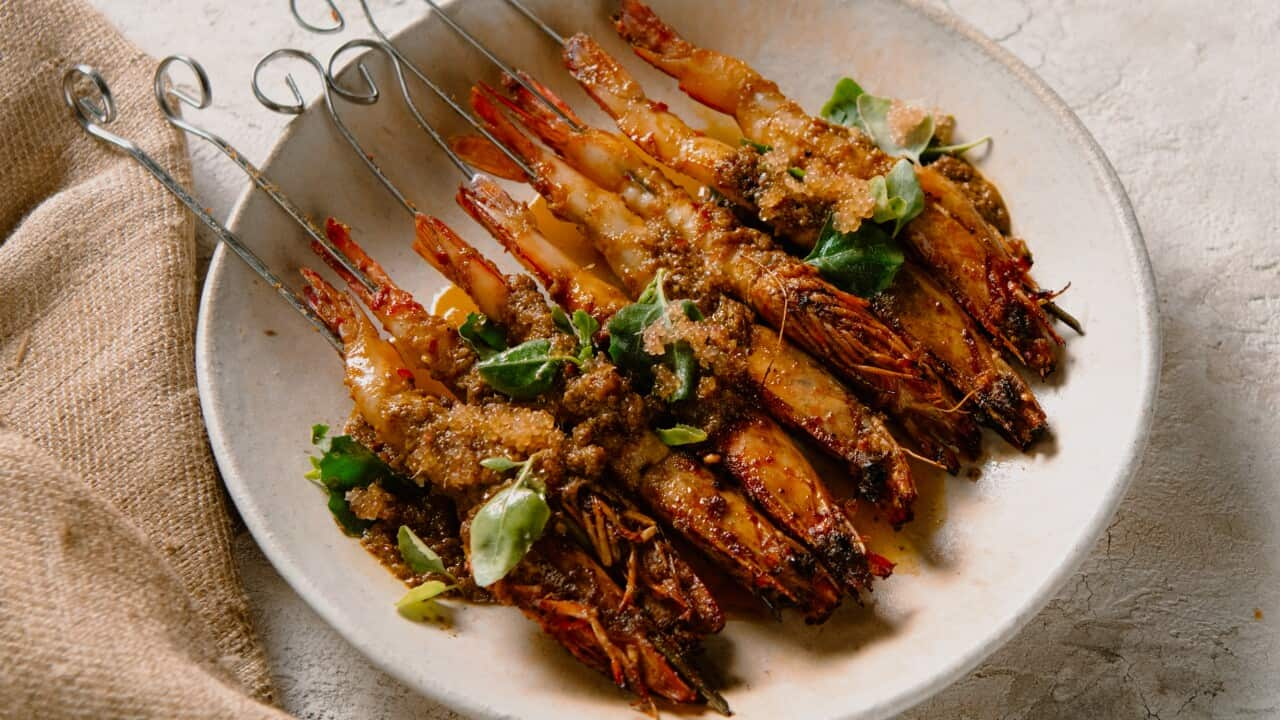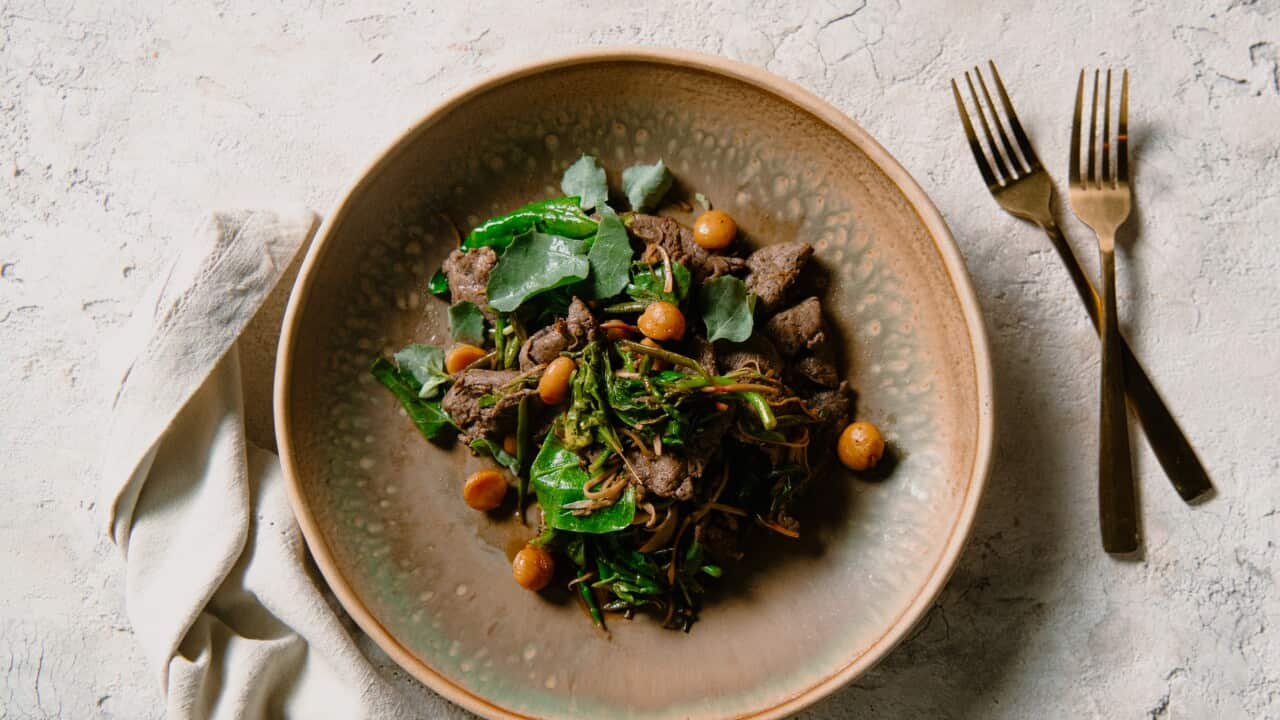Stream free On Demand

Island Echoes With Nornie Bero
series • cooking
PG
series • cooking
PG
Indigenous communities from the Arctic to Africa have long followed seasonal divisions that differ from the European calendar. Instead of summer, autumn, winter and spring, there’s “ukiaksak” – when rain comes more frequently and berries are plentiful or “uBusika” – when the maize is ripe for cutting.
In Australia, over thousands of years of observation, our developed sophisticated seasonal frameworks – each and revealing of the rich environmental complexity.
As Bundjalung woman, owner and chef of and author of, explains, “The European framework of the four seasons has been overlaid on our expansive island continent, often overlooking its diverse geographical and environmental realities.”

Credit: Karkalla Byron Bay
There is no "one" Indigenous season in Australia
Wondering how many seasons there are for Indigenous Australians? Well, there is no universal "Aboriginal and Torres Strait Islander" calendar, with the groups of each area having developed their own system based on their specific environment.
“A single calendar could never truly capture the complexities found across our vast land," says Woods. "Given the rich diversity of our landscapes and ecosystems, variations in weather patterns and the behaviours of plants and animals are specific to different regions and communities," says Woods.
“The Bundjalung cultural calendar reflects the unique environment and landscape of my home and my ancestors' origins,” she continues. The Yolŋu people of Arnhem Land recognise six seasons that align with the monsoonal climate, the Tiwi calendar has three, also evolving around the monsoon cycle, the Kaurna calendar of the Adelaide Plains recognises four seasons, determined largely by the wind. The Ngan'gi calendar of the Daly River area has thirteen, based largely around the speargrass plant cycle.

What do Indigenous Australians base the seasons on?
Rather than dates on a linear calendar, Indigenous Australians use cues from nature to define the seasons, representing thousands of years of careful observation and deep connection to Country — the flowering of the stringybark tree, flying ants cruising on southerly winds, the position of the Southern Cross constellation in the sky.
"For thousands of years, Aboriginal peoples across Australia developed a profound understanding of how to harmoniously live alongside the environment," Woods explains. "They meticulously observed weather changes, rainfall patterns, wind shifts, temperature fluctuations, celestial events, animal behaviours, and the life cycle of plants."

Bundjalung Seasonal Calendar Tea Towel Credit: Karkalla Byron Bay
Sustainability is inherent to Indigenous Australian seasons
By aligning diet with these natural rhythms of Country, communities not only enjoy peak-quality produce and protein sources but also help maintain ecological balance.
Yirrimbu season brings particular foods into abundance, says Woods, such as finger limes – (known as 'Gulalung' in Bundjalung language) – one of her favourite ingredients, signalled by ‘beautiful pink bloodwood flowers’.
During Makuru (June – July) for the Noongar people of southwest Western Australia – fish are plentiful along inland waterways swollen by winter rains. Come Djilba (August – September), the land begins to bloom with wildflowers, signalling the availability to gather certain seeds and tubers at their most abundant.
Understanding the rhythms and patterns of Country is fundamental
When the speargrass seeds start to fall in the Daly River (Ngan'gi calendar) and dragonflies arrive, it’s the start of Wurr bengim miyerr – which not only indicates that dry season is coming, but it's the ideal time to hunt for barramundi.

Speargrass (Heteropogon contortus) flowering. Source: iStockphoto / Jayantibhai Movaliya/Getty Images
"Cooking with ingredients that are local and seasonal is central to the way I love to cook," Woods shares. "Understanding the rhythms and patterns of Country is fundamental to that."
Seasonal knowledge also underpins preservation practices: communities might smoke, cure, or dry foods in anticipation of less abundant months, timing these processes to coincide with the right weather conditions. During Ngardaru (hot season) the Yanyuwa people in the Gulf of Carpentaria, Cycad and pandanus nuts are harvested then ground, dried and stored to be made later into dampers.
Indigenous Australians have long practised sustainable harvesting and agriculture by working in sync with seasonal signals and the needs of Country, with sophisticated agriculture techniques. For example, “” at precise times in the local calendars to reduce fuel for bushfires and promote biodiversity, and the listed have allowed the sustainable harvesting of eels for thousands of years.
The seasonal and cultural calendars of First Nations peoples play a crucial role in securing a sustainable future.
As Bero explains, "Those seasons don't just mean it brings food, it means regrowth." Rather than extracting resources year-round, communities adjust their activities to the times when species are abundant and healthy. Rest periods promote food security and environmental sustainability.
"The seasonal and cultural calendars of First Nations peoples play a crucial role in securing a sustainable future for both our environment and our communities," says Woods.
In an era of environmental uncertainty, weaving together Indigenous seasonal knowledge with contemporary science offers both a proven heritage and a forward-looking model for sustainable resource management, and toward resilient, place-based food systems.
Woods encourages all Australians to develop a deeper understanding of their local Indigenous seasonal calendar — "I urge all readers to explore the seasonal calendar specific to the traditional First Nations territory where you reside."
*Some examples of documented seasonal calendars can be found by the work of the and with Indigenous communities.











